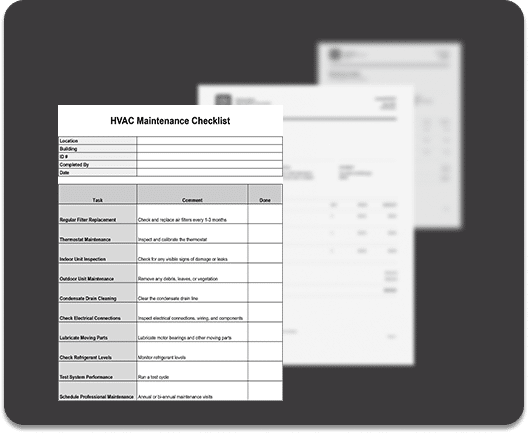Harry White and the American Creed: How a Federal Bureaucrat Created the Modern Global Economy (and Failed to Get the Credit), a new book by James Boughton, was my weekend reading.
Boughton, now retired, was formerly the official in-house historian of the International Monetary Fund (IMF). White was a fairly senior official in the US Treasury, a key adviser to Secretary Henry Morgenthau, from the late 1930s to 1945, and has a fair claim to have been the technocratic father of the IMF (and was then for a short time the first US Executive Director of the IMF). It was a short official career and he died quite young, but has an interesting – and contested – story nonetheless.
What of the book? Well, ignore most of the title. I’m still not at all sure what the “American Creed” is supposed to mean in this context, and the bit about “created the modern global economy” is simply laughably wrong (and seriously misleading to the casual bookshop browser). It is a full biography, but two-thirds of the book is about the last 7 years of White’s life (1941-48), including extensive discussion of the allegations which have dogged his reputation ever since that White may have been a Soviet spy.
By the time White became even moderately senior in the US Treasury, pretty much every country had moved off the Gold Standard (the European “gold bloc” countries not until 1936) and most major exchange rates floated. In the diminishing number of democratic countries, private capital movements were mostly still free (although in the US for example private holdings of gold were simply outlawed). Views differed on whether the new exchange rate regimes were a “good thing” or otherwise (in another book on my shelves there is a record of White on an official trip to London in the mid 1930s and talking to prominent business figures who had embraced an era of floating exchange rates, but officialdom was often less enthusiastic). In some circles then – and still today (Boughton seems guided by this story) – there was a narrative that non-fixed exchange rates were a material element causing a backing away from globalisation and multilateral trade in the 1930s (a story that I don’t think stands much scrutiny). It is certainly true that floating exchange rates in peace time were something of a novelty.
Then came the war (the US eventually joining in late 1941) with the attendant debt, disruption, and extensive controls over all manner of aspects in life in pretty every combatant country (and even many neutrals).
White wasn’t heavily involved in the creation of lend-lease, that innovative form of cross-country support initiated by the US (although they too were recipients of lend-lease assistance, New Zealand (for example) being a net provider of assistance to the US) but eventually had oversight responsibility for the administration of the scheme. The real focus of his efforts as described in the book was on post-war planning, which absorbed a huge amount of resource among (in particular) US and UK officials even as the physical conflict raged.
As is fairly well known, there were rival conceptions of the details of what the post-war international monetary order should look like, exemplified by the ideas of White (for the US) and Keynes (a key adviser to the British). But what no one seems to have been in much doubt about was that a regime of fixed (but adjustable) exchange rates should be established, and that if current account convertibility (ability to buy, sell and pay for goods and services freely from abroad) was over time to be a goal for many/most, private capital mobility was (at best) looked on with considerable suspicion (neither White nor Keynes were keen). If you weren’t going to allow private capital mobility, not only were fixed exchange rates were more or less unavoidable but governments had to be sure of their own access to foreign reserves to manage fluctuations in the demand for their respective currencies. There was no appetite for a return to a classical Gold Standard, but also a surprising attachment to the idea that gold should still have a place in the international monetary system (one presumption being that countries would be reluctant to accumulate substantial foreign reserves simply in the currency of another country without the ability to convert to gold).
If there were different conceptions there were also different interests and contexts. The US, for example, had been a net provider of assistance to the rest of the world during the war, and so although it would emerge from the war with large domestic debts it had not accumulated an adverse international position. The US under Roosevelt also came and went a bit on to what extent they sought to undermine the future of the British Empire and British Commonwealth relationships (notably the imperial preference trade arrangements, and the “sterling area” which had developed after Britain went off gold in 1931). The UK, by contrast, had suffered a real large deterioration in its external financial position (as well as having lots of domestic debt) as a result of the war, and had accumulated huge volumes of blocked sterling liabilities to Commonwealth and Empire countries (goods had been sold to Britain, sellers had been paid in sterling, and the resulting central bank balances were not readily convertible into other currencies – notably dollars). New Zealand was among the countries that had accumulated such large claims on the UK. The overhang of sterling liabilities was to be an issue for decades. The US was keen on a fairly early move to convertibility, while the UK was wary, to say the least. (There were, of course, many other countries, including the exiled governments of occupied countries like the Netherlands and Norway, but the bulk of the discussion and negotiation was between US and UK officials – often led by White and Keynes (both of whom seem to have been awkward characters in different ways).
In institutional terms the US conception won the day. It was almost always going to. The US was by the biggest economy, was not itself dependent on external finance (although had a clear interest in a general post-war economic revival), and of course whatever was agreed between governments had to get through a US Congress that – as ever – was not generally under the control of the executive. And, in truth, the basis IMF structure (my focus here although the World Bank – International Bank for Reconstruction and Development – also emerged, less controversially for this process) was an elegant one. Countries would fix an exchange rate to the USD, while the USD itself would be convertible (for governments/central banks) into gold at a fixed rate. Each member country would deposit some portion of their gold or USD reserves with the Fund, which in turn would establish rights for countries to “borrow” from the Fund in times of temporary balance of payments pressures. Countries could make modest exchange rate adjustments themselves, but larger adjustments – to address structural imbalances – would require the approval of the Fund, itself governed by Executive Directors appointed or elected according to the quotas negotiated for each country. I put “borrow” in quote marks, as formally the IMF did not do loans, but things that were more like currency swaps – and obscure currency swaps (partly modelled on what had been done with the US’s own Exchange Stabilisation Fund in the 1930s) were thought easier to get through Congress than loans. In economic substance there was no difference.
Boughton was, as I noted earlier, the official in-house historian of the IMF. Since the IMF still exists today, it is a perspective that leans him to seeing what was created in 1944/45 as an unquestionably good thing. I’m much more sceptical. One could wind up the IMF today and the world would not be worse off. And one could mount an argument that if negotiated arrangements were almost inevitable in 1945, there is still little reason to suppose that the creation of the Fund was a net positive even then.
It didn’t – couldn’t – deal with the really big overhanging issues (including, but not limited to, those blocked sterling balances) and was part of state-led arrangements that enabled for a time some deeply unrealistic post-war exchange rates. Britain, for example, went through a period of seeking further US financial assistance, was then forced by the US in exchange to allow early convertibility which went badly wrong very quickly, and only finally took the deep exchange rate depreciation that was always needed under pressure in 1949. It is not hard to think that restoring floating exchange rates pretty much as soon as the war ended might have been a better way (also reducing the pressure later for the Marshall Plan – a point some US sceptics made even at the time).
But whether or not the creation was a good thing, there is little doubt that White was the technocratic father of the Fund – which exists today even if the world it was created for almost wholly doesn’t – and Boughton has written a useful and interesting account of aspects of that period, complementing the range of other books (many on the Bretton Woods conference in 1944 where the final details were negotiated with 40+ allied countries in attendance).
There is lots of other interesting detail in the book (occasionally too much – even as a former Washington resident I did not need every single street address White lived at), including White’s involvement in helping flesh out the madcap Morgenthau Plan that envisaged turning post-war Germany into primarily an agricultural economy. White owed his position to Morgenthau who in in turn owed his position and influence to his friend and neighbour Roosevelt. Once Roosevelt died, White’s hour in the US government system had passed,
One is left with the impression of an influential, extremely hardworking, smart individual, but also an abrasive and not altogether pleasant one. In an age of great figures – good and evil – my sense is that no one would today be writing biographies of him if (a) the IMF no longer existed, and (b) it were not for the espionage allegations (the two aren’t unrelated since it was uncomfortable for the Fund to have such allegations about one of its “founders”).
The espionage allegations were not my main interest in buying the book. Not being American I’m probably less interested in any case against White than in, say, the truth about Bill Sutch. Boughton goes to great lengths to review and rebut in detail many of the claims that have been made ever since the 1940s. In some cases, he seems very persuasive, and in others a bit less so. What is now unquestionable is that some of White’s good friends and colleagues were Soviet agents in one form or another (in some cases very active), and even Boughton concedes that at times White may have been indiscreet in his ties with people who, while Soviet officials, were still wartime allies and official interlocutors. But if Boughton’s is the pro-White case, other serious people (without IMF ties) still seem equally certain of White’s guilt. Perhaps we will never really know.
New Zealand participated in the Bretton Woods conference where the new international monetary arrangements were settled. Our key delegate was Walter Nash then (simultaneously) Deputy Prime Minister, Minister of Finance, and resident NZ Ambassador to the United States. His small delegation including the Secretary to the Treasury, Ashwin, the then Deputy Governor (later Governor) of the Reserve Bank, Fussell, and the highly regarded economist AGB Fisher. There were two main working groups at the conference – one on the Fund chaired by White, and another on the World Bank chaired by Keynes. Nash chaired a less important working group.
Bretton Woods was, in many respects, not a matter of great moment in New Zealand (and it is interesting that neither the war economy nor political and external affairs volumes of the NZ official history of World War Two seem to have any mention of the conference or the issue). New Zealand was firmly in the sterling area – our pound pegged to sterling – and Nash had a strong aversion to overseas debt. But there was still an important defensive interest, since Labour has put in place pre-war extensive exchange controls and import licensing restrictions and had no intention of removing those restrictions in peacetime.
Digging around various other books on my shelves, it seems clear that Nash and the NZ delegation did not make a great impression. Ed Conway’s book, The Summit, has a few comments. Introducing Marriner Eccles, the then chair of the Fed, he suggests that Eccles’ oratory “would give New Zealand’s dreary Walter Nash a run for his money as the most self-important and tedious delegate”. The relative size of each country’s quota in the Fund was then, as now, a matter of politicking dressed up behind an apparent technical façade. New Zealand was among those objecting to the US proposal (not helped by the fact that Nash apparently confused sterling and dollar amounts) “in a ten-minute sermon from the country’s dreary lead negotiator, the Hon Walter Nash”. Conway quotes from the contemporary diary of UK delegate/economist Lionel Robbins “throughout the conference {Nash] has shown a tendency to be about three bars behind the band”.
A more recent history of New Zealand diplomacy during the war, by Gerald Hensley has a more substantive discussion. He notes that the delegation had a good grasp of the basic New Zealand needs “But not one had been able to do any deeper thinking about the implications of the Fund and on this occasion it showed”. He goes to quote from a contemporary British delegation report back home which concluded that Nash was simply out of his depth (“He understood comparatively little of the technicalities, but could not restrain himself from intervening in an embarrassing manner on many complicated points which were, moreover, not the least concern to his country”). The Australian delegation also recorded complaints.
As Hensley notes, however, the government’s (and Nash’s) main focus was on ensuring that nothing in the agreement would interfere with the government’s ability to maintain exchange and import restrictions. Nash’s official biographer, Keith Sinclair records that “according to the notes he made at this time, he asked the chairman Harry D White whether exchange controls were permissible, provided that exchange was used to pay for all current transactions. White replied that this was his understanding, and he asked the meeting if there was any dissent. There was none.”
(Which is all very well but it was not be until the early 1980s that New Zealand finally removed all restrictions on even current account transactions)
If Nash himself was content with the final form of the agreement, there was still a significant amount of angst back home. Instructions came from the Prime Minister that New Zealand was not to sign adhesion to the Final Act from the conference, and in the end the two most junior officials in our delegation were allowed merely to sign a document that certified that it was a true record of the conference proceedings. That Nash himself was persuaded is reflected in a letter to Harry White that was read to the conference by a senior US delegate as the conference was winding up (Nash had had to leave early)
“Owing to the urgency to make a train last night it was not possible to say goodbye before leaving for New Zealand. In congratulating you and those working with you on the foundation work in connection with the Fund and the Bank I affirm that it can easily be the greatest step in world history with possibilities of removing one of the major causes of war, if not the major cause.”
Talk about overblown political rhetoric.
New Zealand was one of a very small handful of countries that participated in Bretton Woods that did not join the Fund early on (the most prominent of course was the Soviet Union, but even Australia did not join until 1947). There is an entire article to be written on this strange history one day (I have a big folder of papers I collected a few years ago but cannot immediately find it). There was significant unease on both sides of parliamentary politics with talk of free votes. It seems to have been one of those issues that few cared much about (either way) but a minority (against) felt very strongly about. The Labour government failed to take any lead (there was significant dissent in their own caucus), and by the 1946 election campaign the leader of the National Party was openly opposed to joining. There seem to have been a range of concerns, some reasonable, some not, and it is not as if there was no sensible dissent in other places either (I read one speech from a senior former UK minister in the House of Commons ratification debate expressing concern that the IMF would allow the UK less exchange rate flexibility than the UK had needed in 1931). Between close ties to the UK, some unease about an emerging US-led system, a commitment to the sterling area and UK trade preferences, all combined with on the one hand the NZ regime of controls and, in the late 40s, New Zealand’s strong external position (we revalued our currency in 1948) there wasn’t much momentum, before the undertones of Social Credit type concerns were mentioned. When New Zealand did finally sign up in 1961, Hansard still records unease from Labour members that IMF membership might threaten New Zealand’s full employment record.
New Zealand did join. New Zealand has borrowed from the IMF on a few occasions ( a former colleague recently described to me the gaming of the rules of one particular facility in the 1970s). It isn’t clear that joining or not really made very much difference then or now – these days we get only not-very-useful advice and a few job opportunities for officials – although it would these days look odd not to be a member.
(Personally I’m quite glad NZ finally did join as four years on the IMF payroll – two resident in Zambia, two as Alternative Executive Director in Washington – were by far the highest paid of my career, and the only technical assistance mission I ever did for them, in China, was conveniently timed to pay the bills for our wedding.)



















